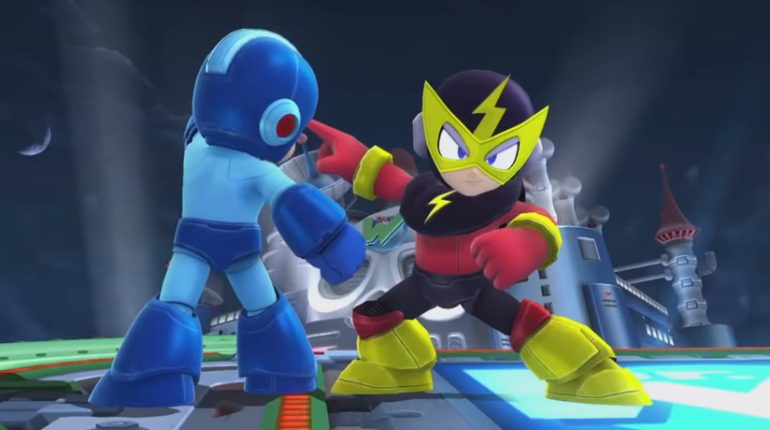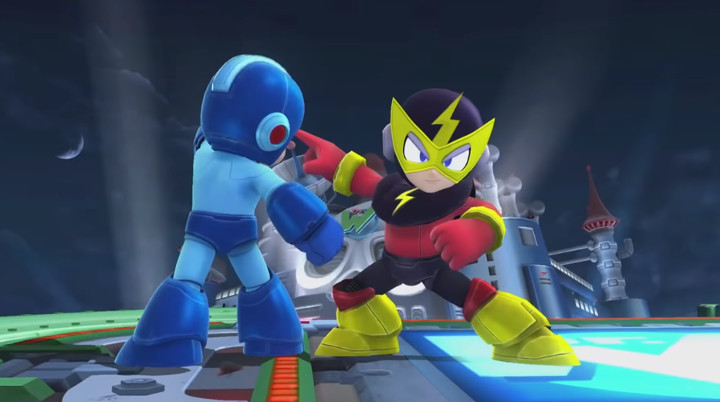
Over the past week, I’ve spent absurd amounts of time with Super Smash Bros. and a rapidly growing collection of amiibo figures. I’ve now trained twelve amiibo to level 50, and all twelve of them are skilled enough that they can regularly best me in battle. Along the way, I learned quite a bit about how the process works. I’m a generous guy, so I’ll share my amiibo-training knowledge with all you Padawans out there.
The most important thing to know about training amiibo is that these things “learn” based on whatever they encounter. Almost everything I’m about to write will ultimately boil down to this: If you want your amiibo to learn something, you must force the amiibo to encounter that thing. Training these things is simple if you just keep that in mind.
For example, if you want your amiibo to be good at countering Link’s bombs, then play a 1v1 match against your amiibo as Link and spam bombs at it. If you want to teach it to use Assist Trophies, play against it and use Assist Trophies as soon as possible after they drop. If you want your amiibo to beat your friends, play against your amiibo as your friends’ favorite characters while emulating their play styles the best you can. I’ve even heard of amiibo learning to taunt by being in matches with players who taunt a lot (see the comments on this Siliconera piece), though it’s supposed to be extremely difficult.
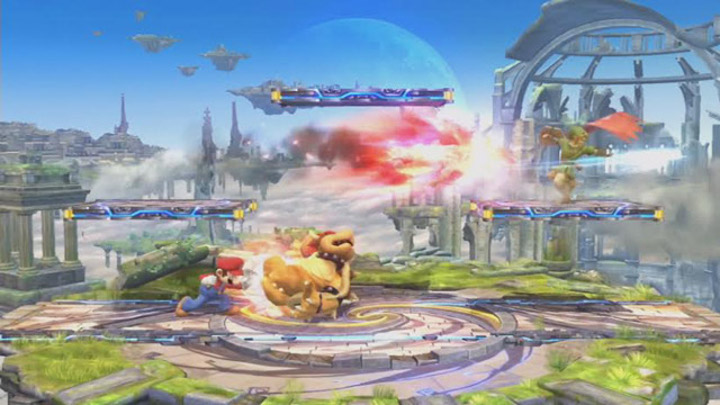
So, in simple terms, if you want to teach your amiibo to do something, play a match with that amiibo and either do that particular thing, or trick your amiibo into doing that particular thing against you.
Some people swear by starting your amiibo figure’s training against the CPU, but I don’t see that as a viable strategy, as the CPU players in Smash tend to play very poorly. I would rather train my amiibo by crushing their spirits right out the gate than ease them into the training process. And the amiibo I train have a tendency to humiliate me pretty badly once I’m done with them, so it seems to work out for them in the end.
The fastest way I’ve seen my amiibo improve was to pit 8 of them against each other in an extensive 8-player battle. (A few times, I set Stock match to 99 lives and just let them go at it while I was busy running errands.) Since they are all learning at the same time, they are developing a meticulously complex and ever-evolving meta-game. That’s both healthy for their training and fascinating to watch.
Now, I’ve seen far too many amiibo training guides that ignore some of the most important fundamentals, though those seem like pretty obvious oversights to me. For example, if you want a well-rounded amiibo character, make it fight against the entire roster rather than just a single player. It will learn different tricks from different characters. Especially focus on characters with radically different play styles, like Ganondorf’s heavy-hitting, slow-paced style vs. Sonic’s jumpy, speedy one.

Further, one of the biggest gaps in training I’ve seen from other guides is the simple fact that your amiibo will learn the environmental hazards of each stage by playing it. I once saw an inferior amiibo destroy a well-trained one because the well-trained one had never played Wily’s Castle before and didn’t know how to dodge the golem. The under-trained one had the advantage purely because it had trained on that particular stage before and knew to stand behind the golem when it begins hurling its chunks across the map.
For a real kick-ass amiibo, make it train on every single stage in the game. Several times, if possible.
You can completely ignore the level of your amiibo, since this number doesn’t tell you anything important and your amiibo will continue to learn after it hits level cap anyway. I’m convinced at this point that the number is completely arbitrary, only there as a handy bit of psychological reinforcement. (It can be difficult to tell, in the beginning, whether your plastic pal is actually getting better, and a constantly climbing number puts your mind at ease because you can clearly see that something is happening.) As far as stat increases? I really doubt leveling up has anything to do with that. (in fact, toward the end of this iJustine video, the Nintendo rep talks about his level 27ish amiibo regularly beating level 50 amiibo due to the type of training he’s done. This only seems to reinforce my theory that level number is completely arbitrary.)
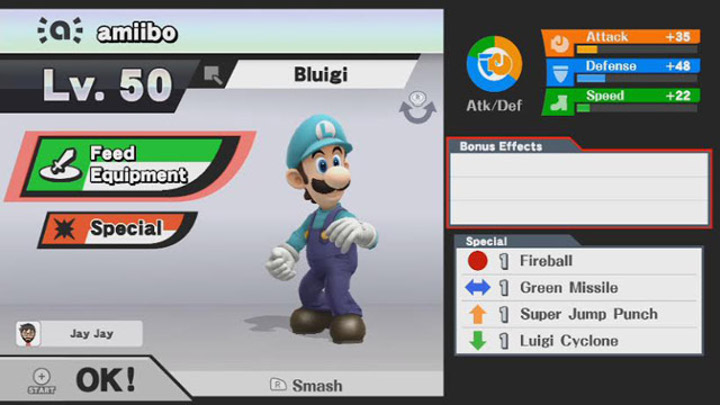
You can increase particular stats on your amiibo, however, by feeding them equipment (the three adjustable stats are Attack, Defense, and Speed). You’ll earn various pieces of equipment simply by letting your amiibo play the game. In the amiibo menu, you can then “feed” your amiibo these items, and each will typically increase one stat while decreasing another. It makes sense, then, to use items that give a larger + number than a – number.
For example, if you want to increase Speed, it might make more sense to feed an item that gives +19 Speed and -2 Attack than one that gives +23 Speed and -45 Attack.
Of course, the higher you increase your stats, the smaller the stat boost given by items. There is a cap on the amount of points you can have in total, which means it’s impossible to max all 3 stats simultaneously.
Additionally, feeding an amiibo certain types of equipment will give it a Bonus Effect aside from the base stat increase. For example, I created a bastard of a Donkey Kong who could start every match with a Fire Flower. It is possible to give your amiibo negative Effects, so be careful what you feed it. Of course, once you have 3 slotted Effects, attempting to add a fourth will result in your Wii U asking you to remove one. This is a good way to exchange negative effects with positive ones.
Typically, you can only feed your amiibo a few items at a time, though you can increase this by feeding your amiibo immediately after a battle, so feed it as often as you can. Once you hit the wall, throw it into battle again and return later to feed it more items (and acquire more items while you’re at it).
I’ve written a much more detailed guide on how feeding works, so check that out if you want to delve deeper into the art of amiibo feeding.
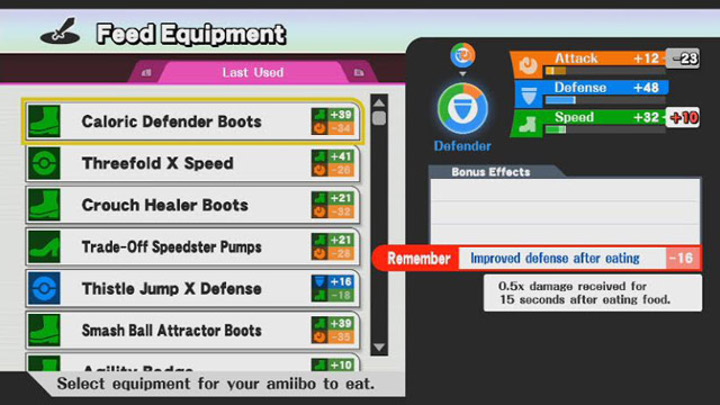
In the amiibo menu, you can also slot custom moves, though those must first be unlocked through gameplay.
A final, perhaps controversial note: I’ve heard a lot of people talking about resetting their amiibo if it started learning bad habits. I’ve never done this for one simple reason: Your amiibo can un-learn bad habits and replace them with new, better ones. It doesn’t make sense for me to wipe a character with 7 or 8 hours invested into it because it has a bad habit, especially since its good habits tend to outweigh the bad when you get that deep into training as long as you’ve done a good job. However, I can’t comment on how effective wiping is as a strategy because I’ve never actually done it. I just don’t see the point.
That’s a lot of information, so here’s a more easily digestible list of bullet points:
- Don’t train your amiibo against the CPU. Always train against a human opponent or another amiibo.
- Force your amiibo into situations in which it encounters the exact things you want it to learn.
- Train against every character and train on every stage. This prepares your amiibo for any possible scenario it might encounter.
- If your amiibo starts developing bad habits, try to break those rather than wiping your data. This can be time-consuming, but so can training an amiibo from scratch every few hours.
- If you have enough amiibo, set up 8-player battles using 8 amiibo and let them fight each other while you’re doing other things. They’ll learn from each other, and their evolution will naturally fill in a lot of the gaps you might have missed.
- Feed your amiibo stat-boosting items as often as you can, but be discerning about what you feed it. If you wind up with a negative Bonus Effect, you can wipe it clean by applying a positive one, as long as you’ve slotted 3 Bonus Effects.
- Ignore your level number. It’s virtually meaningless.
- Avoid the “Level-Up Method” of amiibo training, as it’s less effective than brutally challenging your amiibo from the get-go.
And that’s about it. Happy training!
